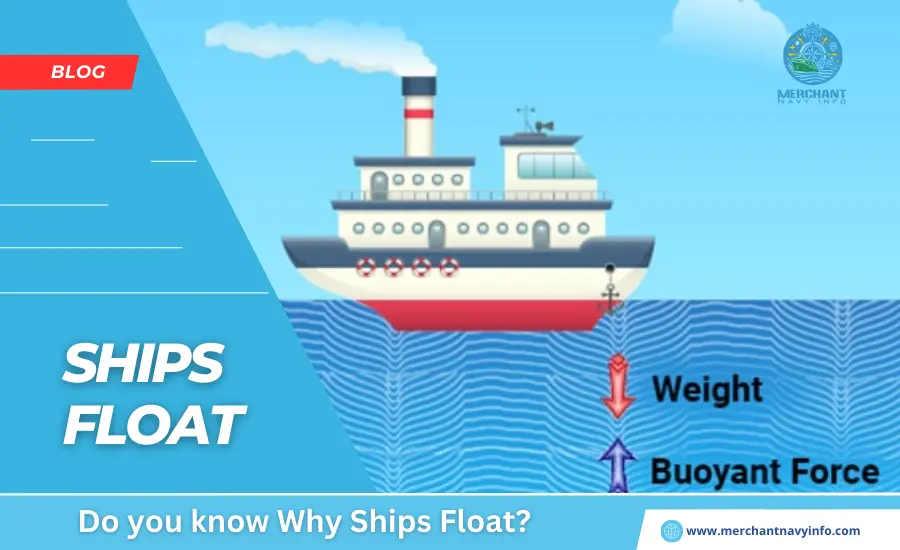
“Eureka! (I found it)”.Archimedes cried as he sank into the bathtub. But did you know that the discovery behind this Eureka is the reason why ships float?
Principle of Buoyancy
If you are Archimedes, and you casually Imagine you are taking a bath. And as your body sinks, “the upward buoyant force on an object immersed in liquid, whether partially or fully submerged, is equal to the weight of the fluid that is moved by an object and acts upward at the center of mass of the fluid being moved. Simply put, gravity exerts a downward force on the boat, trying to pull it into the water. For a boat to float, it must generate a buoyant force equal to or greater than its weight.
Volume
According to Archimedes’ principle, an object will float as long as the volume of the water it displaces is greater than or equal to its weight. This is also based on Newton’s first law. The first law states that an object changes its motion only when a force acts on it. If the buoyant force pushing up is equal to the gravitational force pushing down, the sum of these forces is zero, and the object’s motion remains unchanged. For example, if a ship weighs 100,000 tons, it will float as long as it displaces 100,000 tons of water.
Density
Density is a measure of how much mass is contained in a particular volume. It is usually expressed as mass per unit volume. When an object is immersed in water, it will float or sink depending on the density of the object and the liquid. However, there is a contradiction here. A block of steel thrown into the sea will sink straight to the bottom because it is denser than water, but a ship weighing several million tons will easily float. Why? Free space. Air is much less dense than water, so structures float in open spaces filled with people and cargo. Therefore, if a leak occurs on board, allowing water to enter the ship and displace air, the ship is more likely to sink.
How Do Ships Float?
We may have explained how do ships float, but how can ships withstand dangerous seas and strong winds without capsizing? The answer lies in weight distribution and stability. Optimal weight distribution is determined by considering the overall weight and buoyancy of the boat to ensure it stays balanced and floats. Correct calculation and adjustment of these factors are very important for the seaworthiness and stability of the boat.
Center of Buoyancy (CB)
The center of buoyancy is the center of gravity for the volume of displaced water. When the ship is upright, this point is directly below the ship’s center of gravity (G). As explained, buoyancy exerts an upward force on the ship equal to the ship’s weight.
Center of Gravity (CG)
The center of gravity is the point at which the entire weight of a ship acts vertically downward. Keeping the center of gravity low increases stability. Weight distribution, including cargo, fuel, and other components, is carefully controlled to maintain a low center of gravity. The interaction of these two points contributes to stability. When the boat is tipped by an external force (such as waves or wind), the righting arm generates torque to try to return the boat to an upright position. When a ship begins to heel, buoyancy forces create a torque that tends to return the ship to an upright position. However, if the center of gravity is high, the buoyant force will not stabilize the ship but will increase its pitch.
This is because the moment created by the buoyant force of a low center of gravity tends to rotate the ship in the opposite direction of pitch, whereas a high center of gravity resists this rotational force. Simply put, when a ship heels, the buoyant forces do not effectively counteract the heel but rather contribute to the ship heeling further and exceeding the ship’s stability limits. This can be a dangerous situation and can capsize if not corrected. Engineers and naval architects have carefully designed the ship to have a low center of gravity and balance to maintain stability under a variety of conditions.
Mass Distribution
Engineers also ensure that the ship’s mass is evenly distributed, especially below the waterline. This balanced distribution prevents excessive heeling caused by waves and wind.
Stabilization Systems
Some modern ships use active stabilization systems such as B. Fins that suppress rotational motion caused by waves. These systems provide a smooth ride and reduce the risk of falls. Additionally, ballast tanks allow you to adjust the ship’s weight distribution. By taking in and releasing ballast water, ships can adapt to different sea conditions and optimize stability.










